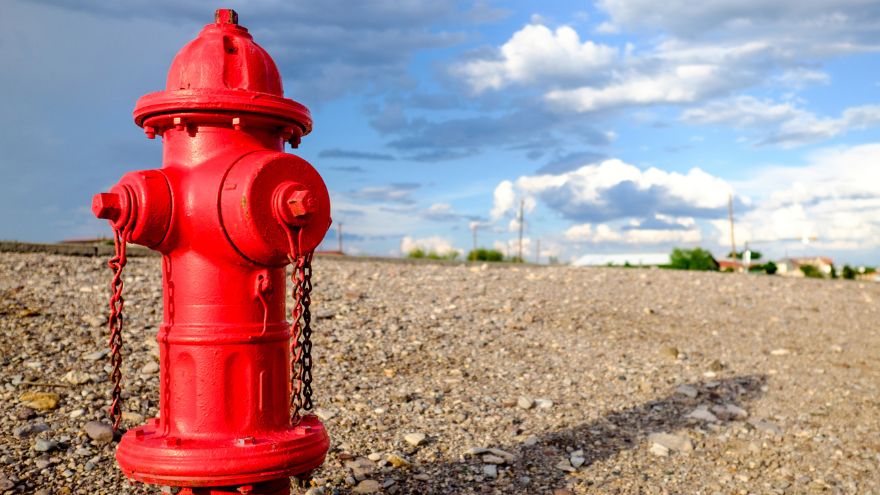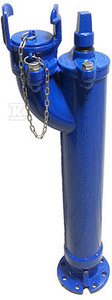Polish law strictly regulates issues related to the installation of hydrants and the entire fire protection system in buildings. The choice of a hydrant variant is not accidental, but strictly regulated by relevant regulations, such as: the Fire Protection Act, the Regulation of the Ministry of Internal Affairs and Administration on fire protection of buildings, other buildings and areas, etc. So - which hydrants should you choose?

Internal hydrant
 Inside buildings, it is important to ensure proper fire protection. Internal hydrants can often be found, mainly in public buildings, shopping malls, etc. They look like small cabinets, hung in visible places on the walls.
Inside buildings, it is important to ensure proper fire protection. Internal hydrants can often be found, mainly in public buildings, shopping malls, etc. They look like small cabinets, hung in visible places on the walls.
Currently, three variants are used: DN25, DN30 and DN52, depending on the type of building in which they will be installed. It can be noted that, depending on the diameter, hydrants are available with a semi-rigid hose (DN25 and DN30) or flat-folding hose (DN52).
In internal hydrants , pay attention to the length of the hose. For DN25 and DN30 hydrants, where a semi-rigid hose is used, variants with a length of 25 or 30 m are available, while for DN52 hydrants the following hose lengths are available: 15 m, 20 m or 20+20, which is a solution used when the emergency exit is more than 30 m.
When choosing hydrants for the interior of a building, you can choose surface-mounted or flush-mounted ones, in various colors. The most important thing, however, is that the hydrant is properly marked.
Check out the offer of hydrants at the Onninen wholesaler
Outdoor hydrant
Outdoor hydrants are one of the landscape elements that can often be observed, e.g. along roads. According to legal regulations, they must be located along roads and streets and at intersections, maintaining appropriate distances from each other, from street edges, etc. This arrangement is important for firefighting services because it ensures adequate and quick access to water during firefighting operations, but located near large plants and companies, they allow you to expand your safety net. Which hydrant should be chosen depends on several factors.
 One of the key parameters to be taken into account is the nominal diameter of the hydrant. External hydrants with a nominal value of DN80 are usually installed in the water supply network, although Polish law allows the use of variants with DN100 if they are located in the vicinity of buildings whose possible fire-fighting needs require a capacity of at least 30 dm3/s.
One of the key parameters to be taken into account is the nominal diameter of the hydrant. External hydrants with a nominal value of DN80 are usually installed in the water supply network, although Polish law allows the use of variants with DN100 if they are located in the vicinity of buildings whose possible fire-fighting needs require a capacity of at least 30 dm3/s.
It is assumed that in the case of both a above-ground hydrant and an underground hydrant DN80 , its nominal capacity at a water pressure of 0.2 MPa at the hydrant valve at the time of water intake cannot be lower than 10 dm3/s. However, for models with DN100 - it must be at least 15 dm3/s.
Hydrant connection
The type of hydrant connection is selected depending on the hydrant variant. The main parameter is, of course, the diameter, which allows you to attach the fire hose in an emergency situation. It is assumed that a DN25 connection should be used for hydrants 25, a DN50 connection for hydrants 33 and 52, and a DN80 connection for 52 hydrants.
 Please remember that the entire fire protection installation is based on a previously prepared design, taking into account the specific needs of a given facility. On this basis, appropriate hydrants and their connections are selected.
Please remember that the entire fire protection installation is based on a previously prepared design, taking into account the specific needs of a given facility. On this basis, appropriate hydrants and their connections are selected.
Building size and hydrant selection
The choice of a hydrant is not a random decision, because there are strictly defined legal rules regarding fire safety. They concern both the size of the area and the type of building in which they are to be located, e.g. in public buildings the DN25 variant is used, while in closed underground parking lots the DN30 variant is used, and in warehouse and production halls the DN 52 variant is used.
It is assumed that the selection of the appropriate hydrant variant and the location of the fire protection network depends primarily on the height of a given building. There are medium-high objects (up to 12-25 m high), high objects (from 25-55 m) and high-rise objects (when h>55 m). Hydrants with a DN52 valve should be located on each floor of tall and high-rise buildings, and in the case of DN25 hydrants - on each floor of high-rise and high-rise buildings, if residential rooms do not occupy the entire area of a given floor.